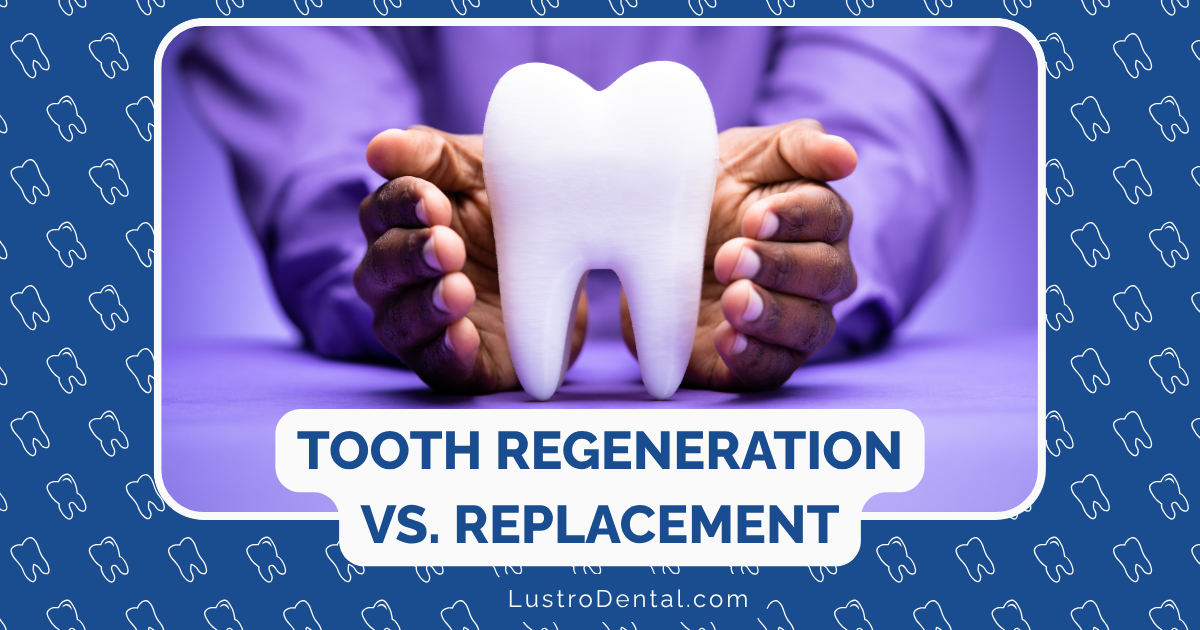The Legal Landscape of Teledentistry in 2025: What Patients Should Know

Teledentistry has evolved significantly since its widespread adoption during the COVID-19 pandemic, becoming an established component of dental care delivery in 2025. As virtual dental services have expanded, so too has the regulatory framework governing these practices. For patients navigating this digital dental landscape, understanding the legal considerations is essential to ensuring safe, effective, and properly delivered care.
This comprehensive guide explores the current legal landscape of teledentistry in 2025, highlighting what patients need to know to make informed decisions about their virtual dental care.
Understanding Teledentistry: The Basics
Before diving into the legal aspects, it’s important to understand what constitutes teledentistry in 2025:
Definition and Modalities
According to the American Dental Association, teledentistry refers to the use of telehealth systems and electronic technologies to deliver dental services between patients and licensed dental providers. This includes several modalities:
- Synchronous (Real-Time) Communication: Live video consultations between patients and dental providers
- Asynchronous (Store-and-Forward): Transmission of recorded health information (such as radiographs, photographs, digital impressions) for evaluation at a later time
- Remote Patient Monitoring: Collection and transmission of personal health data to a dental provider
- Mobile Health (mHealth): Healthcare and public health practice supported by mobile communication devices
Dr. Sarah Johnson, a dental telehealth specialist at the Digital Dentistry Institute, explains: “Teledentistry in 2025 has moved beyond simple video consultations to include sophisticated diagnostic tools, AI-assisted screenings, and even remote monitoring of orthodontic and other treatments. The regulatory framework has had to evolve just as quickly to ensure patient safety.”
State-by-State Regulation: The Patchwork Approach
One of the most important aspects for patients to understand is that teledentistry regulation remains primarily state-based in 2025, creating a complex patchwork of requirements across the country.
Levels of Regulation
According to MouthWatch, a leading teledentistry platform provider, states generally fall into three categories regarding teledentistry regulation:
- Extensive Regulation: States with comprehensive Teledentistry Acts that specifically address virtual dental care requirements, provider qualifications, and patient protections.
- Limited Regulation: States where teledentistry is mentioned in broader telehealth legislation but lacks detailed guidelines specific to dental care.
- Minimal Regulation: States with little to no specific teledentistry regulations, though broader telehealth and dental practice laws still apply.
Recent Legislative Developments
Several states have enacted or updated teledentistry legislation in 2025, including:
- West Virginia: The Teledentistry Practice Act introduced in March 2025 establishes comprehensive requirements for provider-patient relationships, informed consent, and practice standards.
- Virginia: New regulations implemented in 2025 focus on digital scan technicians and their training requirements, responding to consumer complaints about improperly fitted dental appliances from teledentistry services.
Dr. Michael Chen, a regulatory affairs expert with the Telehealth Dental Association, advises: “Patients should always verify the specific regulations in their state of residence, as these determine everything from provider licensing requirements to insurance coverage for teledentistry services.”
Key Legal Requirements Affecting Patients
Across most jurisdictions, several common legal requirements affect how patients receive teledentistry services in 2025:
Provider Licensure
Perhaps the most fundamental requirement is that dentists providing teledentistry services must be licensed in the state where the patient is physically located at the time of service.
- The ADA continues to oppose a single national licensure system for teledentistry, maintaining that state dental boards should retain authority over practitioners serving their residents.
- Some states have joined interstate licensure compacts that allow dentists licensed in one member state to practice teledentistry in other member states without obtaining additional licenses.
- Patients have the legal right to verify their provider’s licensure status and qualifications before receiving teledentistry services.
Establishing a Valid Provider-Patient Relationship
Most states now require the establishment of a legitimate provider-patient relationship before teledentistry services can be provided:
- Many jurisdictions, like West Virginia, require a review of the patient’s history and some form of examination (which may be virtual) to establish this relationship.
- Some states allow exceptions for emergency situations, public health programs, or initial consultations.
- Patients should expect to provide comprehensive health information and may need to complete a virtual examination before receiving treatment recommendations.
Informed Consent Requirements
Informed consent requirements for teledentistry have become more standardized in 2025:
- Providers must disclose their identity, credentials, and location to patients.
- Patients must be informed about the types of services that can be provided via teledentistry, as well as the limitations.
- Consent forms typically include information about what to do in case of technological failure during a virtual visit.
- Many states require specific language about the potential need for in-person follow-up care.
Lisa Rodriguez, a patient who recently used teledentistry services for an orthodontic consultation, shares her experience: “Before my virtual appointment, I received a detailed consent form explaining what could and couldn’t be accomplished remotely. It made it clear that while the initial consultation could be virtual, I would need in-person visits for certain aspects of treatment. This transparency helped set realistic expectations.”
Standard of Care Requirements
A consistent legal principle across all jurisdictions is that the standard of care for teledentistry must be equivalent to in-person dental services:
- Dental providers must adhere to the same clinical standards, ethical requirements, and professional judgment whether care is delivered virtually or in person.
- Documentation requirements remain stringent, with providers required to maintain comprehensive records of all teledentistry encounters.
- Many states now require teledentistry providers to have established relationships with in-person dental providers for referral when necessary.
Privacy and Data Security
The legal requirements for protecting patient information in teledentistry have strengthened considerably by 2025:
- All teledentistry platforms must be HIPAA-compliant, with end-to-end encryption and secure data storage.
- Many states have implemented additional data protection requirements beyond federal standards.
- Patients have expanded rights to access their teledentistry records and control how their information is shared.
- Providers must use technology that meets current security standards and regularly update their systems.
Insurance Coverage and Payment Parity
The insurance landscape for teledentistry has evolved significantly by 2025:
Payment Parity Laws
Many states have enacted payment parity laws requiring insurance companies to reimburse teledentistry services at the same rate as equivalent in-person services:
- These laws help ensure that teledentistry remains financially viable for providers.
- Patients in states with payment parity laws should not face different out-of-pocket costs for choosing virtual care over in-person visits.
- The ADA strongly supports payment parity and opposes any penalties for patients who choose teledentistry services.
Coverage Variations
Despite progress, insurance coverage for teledentistry still varies significantly in 2025:
- Most private dental insurance plans now cover some form of teledentistry, though covered services may be limited.
- Medicare has expanded coverage for certain teledentistry services, particularly for underserved populations.
- Medicaid coverage varies by state, with some states offering comprehensive coverage and others limiting reimbursable teledentistry services.
Dr. James Wilson, a dental insurance specialist, advises: “Patients should always verify coverage with their insurance provider before scheduling teledentistry services. Ask specifically about which virtual services are covered and whether any special requirements or limitations apply.”
Special Considerations for Specific Teledentistry Services
Different types of teledentistry services may have specific legal requirements:
Direct-to-Consumer Orthodontics
The regulation of direct-to-consumer orthodontic services through teledentistry has tightened considerably by 2025:
- Many states now require an initial in-person examination before beginning orthodontic treatment.
- Digital scan technicians must complete board-approved training programs and work under the supervision of licensed dentists.
- Companies must maintain records of dentist involvement in treatment planning and monitoring.
- Several states require periodic in-person evaluations during orthodontic treatment that began with teledentistry.
Remote Monitoring Services
As remote monitoring technology has advanced, so have the regulations governing its use:
- Providers using remote monitoring must establish clear protocols for reviewing data and responding to concerning findings.
- Patients must be informed about monitoring frequency and what constitutes an emergency requiring immediate attention.
- Documentation requirements for remote monitoring are extensive, with all data and provider responses becoming part of the patient record.
AI-Assisted Diagnosis
The integration of artificial intelligence in teledentistry diagnosis has prompted new regulations:
- AI tools used in diagnosis must be evidence-based and FDA-approved for their specific application.
- Providers must disclose when AI is being used as part of the diagnostic process.
- Human oversight by licensed dental professionals remains mandatory for all AI-assisted diagnoses.
- Patients have the right to request traditional evaluation methods if they prefer.
Protecting Yourself as a Teledentistry Patient
With the legal landscape in mind, here are practical steps patients can take to protect themselves when using teledentistry services in 2025:
Verify Provider Credentials
- Confirm that your provider is licensed in your state of residence.
- Research their credentials, education, and experience.
- Check for any disciplinary actions through your state’s dental board.
Understand Service Limitations
- Be clear about what can and cannot be accomplished through virtual visits.
- Know when in-person care is necessary or preferable.
- Understand the process for escalating care if virtual services are insufficient.
Review Consent Forms Carefully
- Read all teledentistry consent forms thoroughly before signing.
- Ask questions about any terms or conditions you don’t understand.
- Pay particular attention to privacy policies and how your data will be used.
Confirm Insurance Coverage
- Contact your dental insurance provider to verify coverage for specific teledentistry services.
- Understand your potential out-of-pocket costs.
- Ask about any special requirements or limitations for teledentistry coverage.
Maintain Records
- Keep copies of all communications with teledentistry providers.
- Document the dates and nature of all virtual visits.
- Save any treatment recommendations or prescriptions provided virtually.
The Future of Teledentistry Regulation
Looking beyond 2025, several trends are likely to shape the future legal landscape of teledentistry:
Movement Toward Standardization
While state-by-state regulation continues to be the norm in 2025, there is growing momentum toward more standardized approaches:
- Professional organizations like the ADA are advocating for model legislation that states can adopt to create more consistency.
- Interstate compacts are expanding, allowing providers to practice across state lines more easily while maintaining patient protections.
- Federal legislation is being considered to establish minimum standards for teledentistry while preserving state authority over licensure.
Integration with Broader Healthcare Systems
As healthcare becomes more integrated, teledentistry regulations are increasingly aligning with broader telehealth frameworks:
- Unified telehealth platforms that include medical, dental, and other specialties are driving more consistent regulations across disciplines.
- Electronic health record interoperability requirements are affecting how teledentistry data must be captured and shared.
- Value-based care models are influencing how teledentistry services are regulated and reimbursed.
Emerging Technology Considerations
Advancing technology continues to present new regulatory challenges:
- Regulations for AI diagnostic tools are becoming more sophisticated as the technology evolves.
- Virtual reality and augmented reality applications in teledentistry are prompting new safety and efficacy standards.
- Remote treatment technologies, such as 3D-printed appliances based on digital scans, face increasing regulatory scrutiny.
Dr. Emily Martinez, Director of the Center for Digital Dental Innovation, predicts: “The next frontier in teledentistry regulation will likely focus on emerging technologies like AI diagnostics and remote treatment delivery. The challenge will be balancing innovation with patient safety in a way that doesn’t stifle beneficial advances.”
Conclusion: Navigating the Evolving Landscape
The legal landscape of teledentistry in 2025 reflects both the tremendous growth of virtual dental care and the ongoing effort to ensure these services are safe, effective, and accessible. While regulations continue to evolve, several principles remain constant: the importance of provider licensure, maintaining standards of care, ensuring informed consent, and protecting patient privacy.
For patients, the key to successfully navigating this landscape is staying informed about the specific requirements in your state, understanding the capabilities and limitations of teledentistry, and being an active participant in your virtual dental care. By doing so, you can take advantage of the convenience and accessibility that teledentistry offers while ensuring you receive appropriate and legally compliant care.
As teledentistry continues to evolve beyond 2025, the regulatory framework will undoubtedly continue to develop alongside it. By understanding the current legal landscape, patients can make informed decisions about incorporating virtual dental care into their overall oral health strategy.
This article provides general information about teledentistry regulations as of 2025 and should not be considered legal advice. Regulations vary by state and change frequently. Always consult with healthcare providers and, if necessary, legal professionals regarding specific situations.
Have you used teledentistry services? What was your experience with the legal and regulatory aspects? Share your thoughts in the comments below!







